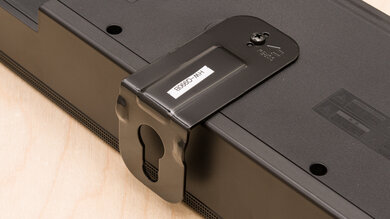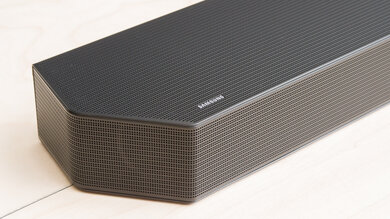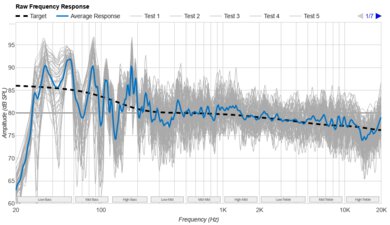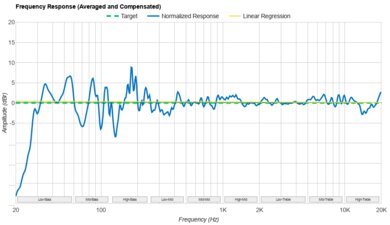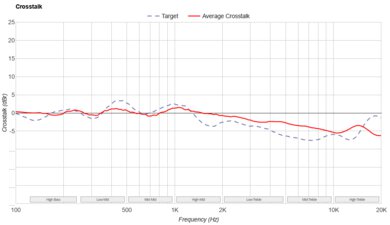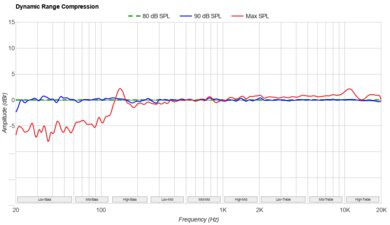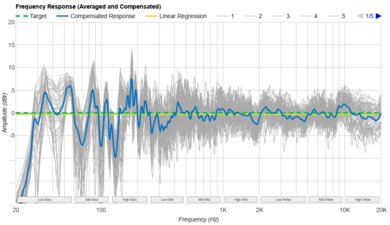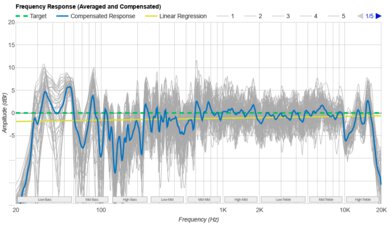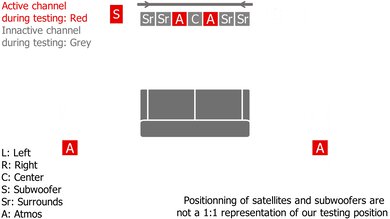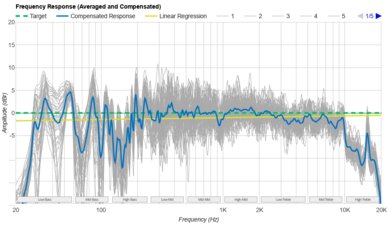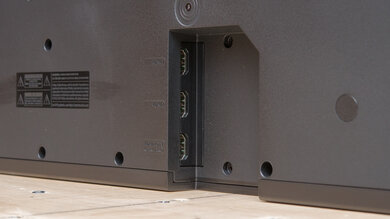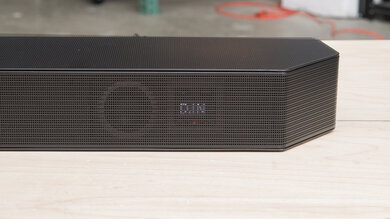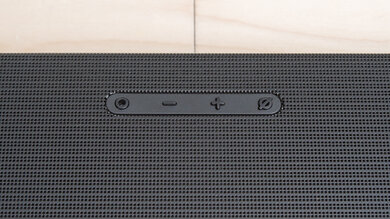The Sennheiser AMBEO Soundbar Mini is a smaller alternative to larger setups from the manufacturer like the Sennheiser AMBEO Soundbar Plus. It's a great choice if you're low on space, and it still offers many of the same premium features. For example, you find built-in voice assistant support as well as lots of sound enhancement features, including room correction. Despite its small size, it's advertised to create a wide and immersive sound in your living room through a sound processing feature called AMBEO Virtualization. You can even add on a separate sub to enhance its bass performance.
Our Verdict
The Sennheiser AMBEO Mini is decent for mixed usage. This small soundbar is a good alternative if you don't have a lot of space in your living room. It offers a balanced sound with lots of sound enhancement features and support for many commonly found audio formats. However, it lacks a lot of thump and rumble in the bass, and it doesn't bring the same immersive feel to multi-channel content as other soundbars with discrete surround channels.
- 4-band EQ.
- Gets loud.
- Lacks low-bass.
- Okay stereo soundstage.
The Sennheiser AMBEO Mini is good for dialogue-centric content like TV shows and podcasts. Though it lacks a discrete center channel, it can still reproduce dialogue with clarity and detail. As a result, it's easy to follow along with conversations in your favorite shows. Many sound enhancement features are also available, including dialogue enhancement.
- 4-band EQ.
- Gets loud.
- Dialogue enhancement tool.
- Some compression at max volume.
The Sennheiser AMBEO Mini is decent for music. This soundbar comes with a room correction tool designed to optimize the bar's sound based on the unique acoustics of your space. With it on, the bar has a neutral and even sound suitable for many different genres. You can customize its output with its 4-band EQ, too. However, given that it's a standalone bar, it struggles to bring out the deep thump and rumble in the bass.
- 4-band EQ.
- Gets loud.
- Lacks low-bass.
- Some compression at max volume.
The Sennheiser AMBEO Mini is fair for movies. This small soundbar supports many different audio formats you'll likely find on both streaming platforms and Blu-rays, including Dolby Digital and Dolby Atmos. Dialogue is clearly reproduced, though it lacks a lot of rumble in the low bass. Plus, this smaller bar struggles to bring a truly immersive feel with multichannel content, so you don't get the same sense of height as with other small bars.
- 4-band EQ.
- Supports many different audio formats.
- Lacks low-bass.
- Okay stereo soundstage.
Changelog
- Updated Oct 01, 2024: This review's
- Updated Aug 21, 2024: This review has been updated to mention the Sony BRAVIA Theater Bar 8 in Inputs/Outputs - Bar.
- Updated Feb 23, 2024: Following the bar's conversion to Test Bench 1.3, we've added text to the Audio Latency: ARC box to better explain our results.
- Updated Feb 23, 2024: We've converted this review to Test Bench Update 1.3. If applicable, we've retested stereo sound based on the manufacturer's recommendations. Additionally, we've expanded our audio latency tests to the following boxes: Audio Latency: ARC, Audio Latency: HDMI In, and Audio Latency: Optical. You can see the full changelog here.
Check Price
Differences Between Sizes And Variants
The Sennheiser AMBEO Mini is only available in Black. You can see the label for the model we tested here.
Let us know in the forums if you encounter another version of this soundbar.
Popular Soundbar Comparisons
The Sennheiser AMBEO Mini is the manufacturer's response to other small, premium soundbars like the Sonos Beam (Gen 2). Both products offer smart features like voice assistant support in a compact and stylish package, with lots of sound enhancement features to make the most of your listening experience. However, the Sennheiser doesn't provide as life-like or immersive a sound as the similarly-sized Sonos, even though it also has side-firing drivers.
See our recommendations for the best small soundbars, the best Dolby Atmos soundbars, and the best soundbars for movies.
The Sonos Beam (Gen 2) and the Sennheiser AMBEO Soundbar Mini are both premium small soundbars with built-in voice assistant capabilities. However, the Sonos is the best of the bunch since it does a better job of creating an immersive soundstage that stretches further past the edges of the bar itself. Unlike the Sennheiser, it also has a discrete center channel to improve vocal reproduction. However, the Sennheiser's graphic EQ gives you more control over its sound compared to the Sonos's bass and treble adjustments.
The Sennheiser AMBEO Soundbar Plus is better than the Sennheiser AMBEO Soundbar Mini. As you can guess from their names, the Mini is a smaller, more compact bar better suited for smaller spaces. However, its soundstage and center channel performances aren't as good as the Plus. The Plus also has more connectivity options, notably a Full HDMI In port for video passthrough.
Depending on your listening habits, you may prefer either the Sennheiser AMBEO Soundbar Mini or the JBL Bar 5.0 MultiBeam. They're both compact soundbars designed for smaller spaces. Only the JBL has a discrete center channel to improve vocal reproduction. However, the JBL has to downmix Atmos content into surround sound, which isn't true of the Sennheiser. As a result, the Sennheiser brings a more clear and real sound with Atmos. The Sennheiser offers more sound enhancement tools, too.
The Sennheiser AMBEO Soundbar Mini is more versatile than the original Sonos Beam. Unlike the Sonos, the Sennheiser supports Dolby Atmos content. However, it doesn't bring as wide a soundstage with stereo content. You might want to compare the Sennheiser with the Sonos Beam (Gen 2), as this next-generation bar adds Atmos support, too.
Test Results





